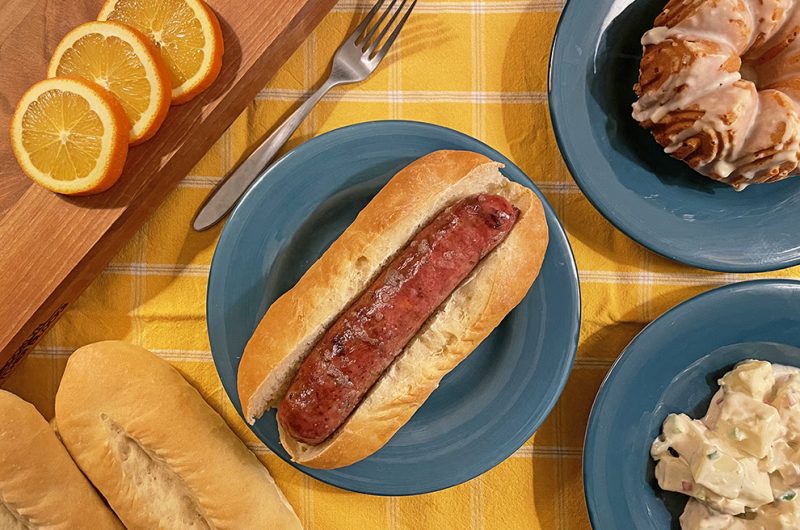
ABOUT THE ART
Dürer, Albrecht. Saint Anthony Reading. 1519. Engraving. Sheet: 3 7/8 × 5 5/8 in. (9.8 × 14.3 cm). Prints. Fletcher Fund, 1919. Accession Number: 19.73.66. New York. The Metropolitan Museum of Art.
Saint Anthony the Great – January 17th
St. Anthony is considered “great” because he was one of the first saints of Christendom, a time when many of the first saints were martyred. Being a Christian in those times meant making a commitment to Christ even in the face of death. However, after Christianity became the dominant religion and Christendom was established, it became harder to know what it meant to be a Christian. Everyone was a Christian, but few were truly following Christ.
St. Anthony had a plan to change that. He decided to give up his great inheritance and withdraw into the wilderness, just like Jesus before him, to live a life of asceticism and self-denial. As he moved away from the world and towards Christ, people from all over were drawn to him. He created a new form of life called monasticism, and today all monks and nuns follow in his footsteps. For those of us who are not called to monasticism, St. Anthony helps us find our center in Christ instead of the world. We all need St. Anthony moments in our lives to recenter ourselves.
In iconography, St. Anthony is often depicted with a pig. The reason for this is a matter of contention. Some suggest it is because he battled evil, which in the New Testament has swine symbolism. However, we prefer the story that one day he came across an injured pig, which he prayed for and healed. Then, because St. Anthony was a vegetarian, that pig became his lifelong friend. I’m sure that was quite a sight to his neighbors!
There are many traditions related to St. Anthony, but we like the Spanish tradition of celebrating with a pork feast around a fire. Winter is a great time of year for a fire, and you can even grill your pork outside if you want. We recommend the most monastic of meats: sausage. Just like Vienna sausage is the perfect food for a trip into the woods or out on the water, sausage is the perfect food for those seeking solitude and silence. Ours is served with a homemade hoagie roll, because hoagie is short for “hog island,” a historic shipyard in Philadelphia. So find some peace and quiet, prepare your sausage feast, and take a St. Anthony moment for yourself.

Sausage on Fresh Hoagie Roll
For the Sausage (grill or cook using method of your choice)
For Grilling: Place the sausages on a grill grate over indirect heat. Cook with the lid closed for fifteen minutes. Flip the sausages, and check their temperature. Continue grilling until the internal temperature measures 160°F. If the sausages aren’t browned enough, move them over the direct heat (one of the lit burners) and grill, watching carefully for flare-ups, until each reaches the desired color. Serve on hoagie roll with condiments of your choice.
Keep the screen of your device on
Ingredients for hoagie roll
5 cups 5 bread flour
4 teaspoons 4 instant yeast
1 tablespoon 1 salt
2 cups 2 water, room temperature
3 tablespoons 3 vegetable oil
1 large 1 egg, room temperature
4 teaspoons 4 sugar
Directions
- Whisk 5 cups bread flour, 4 teaspoons instant yeast, and 1 tablespoon salt together in a mixing bowl.
- In a separate mixing bowl whisk together 2 cups water, 3 tablespoons vegetable oil, 1 large egg, and 4 teaspoons sugar until the sugar has dissolved.
- Beginning with a spoon (or in a stand mixer with dough hook) mix the wet and dry ingredients together, until a dough starts to form. Once a dough starts to form use your hands to continue mixing and kneading for about 8 to 10 minutes. The dough should be smooth and elastic.
- Transfer the dough to a lightly floured counter space and knead for 30 seconds more before forming into a smooth, round ball.
- Place the dough ball into a lightly greased large bowl and cover tightly with plastic wrap. Let rise until doubled in size, about 1 to 1/2 hours.
- After the dough has doubled in size, gently deflate the dough and then transfer to a counter space. Cut the dough into 8 equal pieces and cover loosely with plastic wrap.
- Working with one piece of dough at a time, press into a 4 inch by 4 inch square.
- Then fold the upper quarter of the dough into the center and press down gently to seal in the middle. Repeat the process by now folding the bottom quarter of the dough into the center and pressing down to gently seal.
- Now fold the dough in half and seal the edge as best as possible.
- With the seal facing down, cup your hands around the dough and roll back and forth without pressing down.
- Stretch and roll the dough into an 8 inch cylinder with slightly tapered ends.
- Arrange the hoagie rolls on two parchment-lined rimmed baking sheets, leaving at least 3 inches between each roll.
- Cover and let rise until nearly doubled, about 3o minutes to an hour. The dough should spring back minimally when poked gently with a finger.
- With oven racks in the lower-middle and upper-middle positions, preheat oven to 350°F degrees.
- Using a knife, make a 1/4 inch deep slash along the center of the rolls starting and stopping about 1/2 inch from roll ends.
- Bake rolls until golden brown about 30 – 35 minutes. Rotate pans halfway through to get an even bake.
- Let cool on a cooling rack for at least 1 hour before serving.